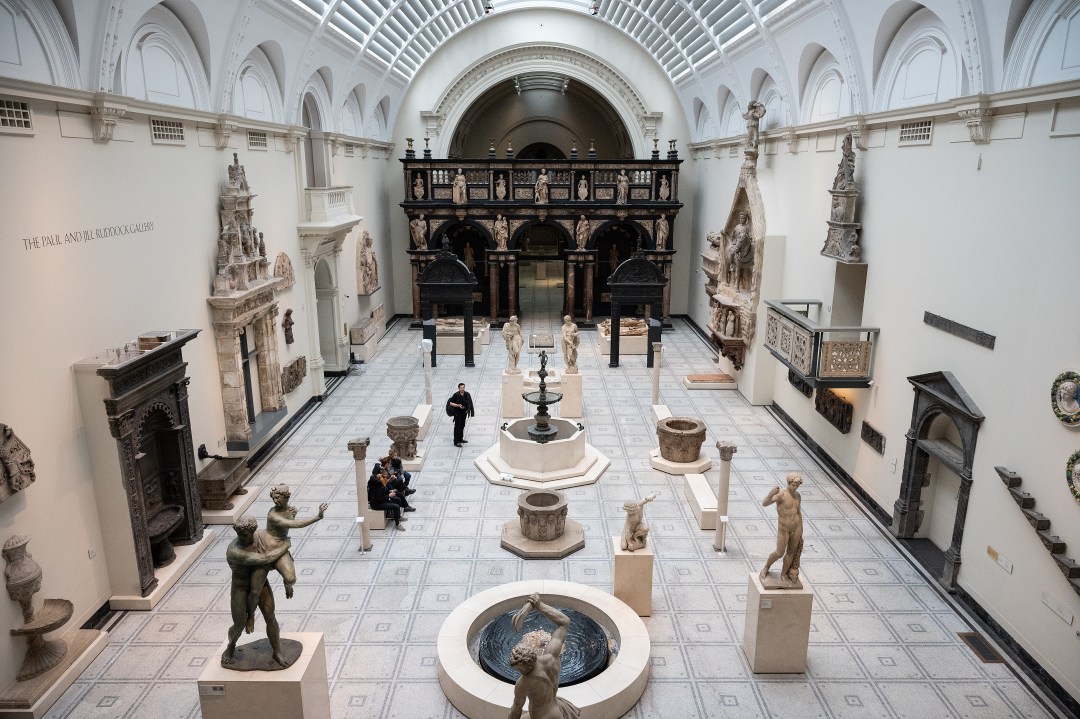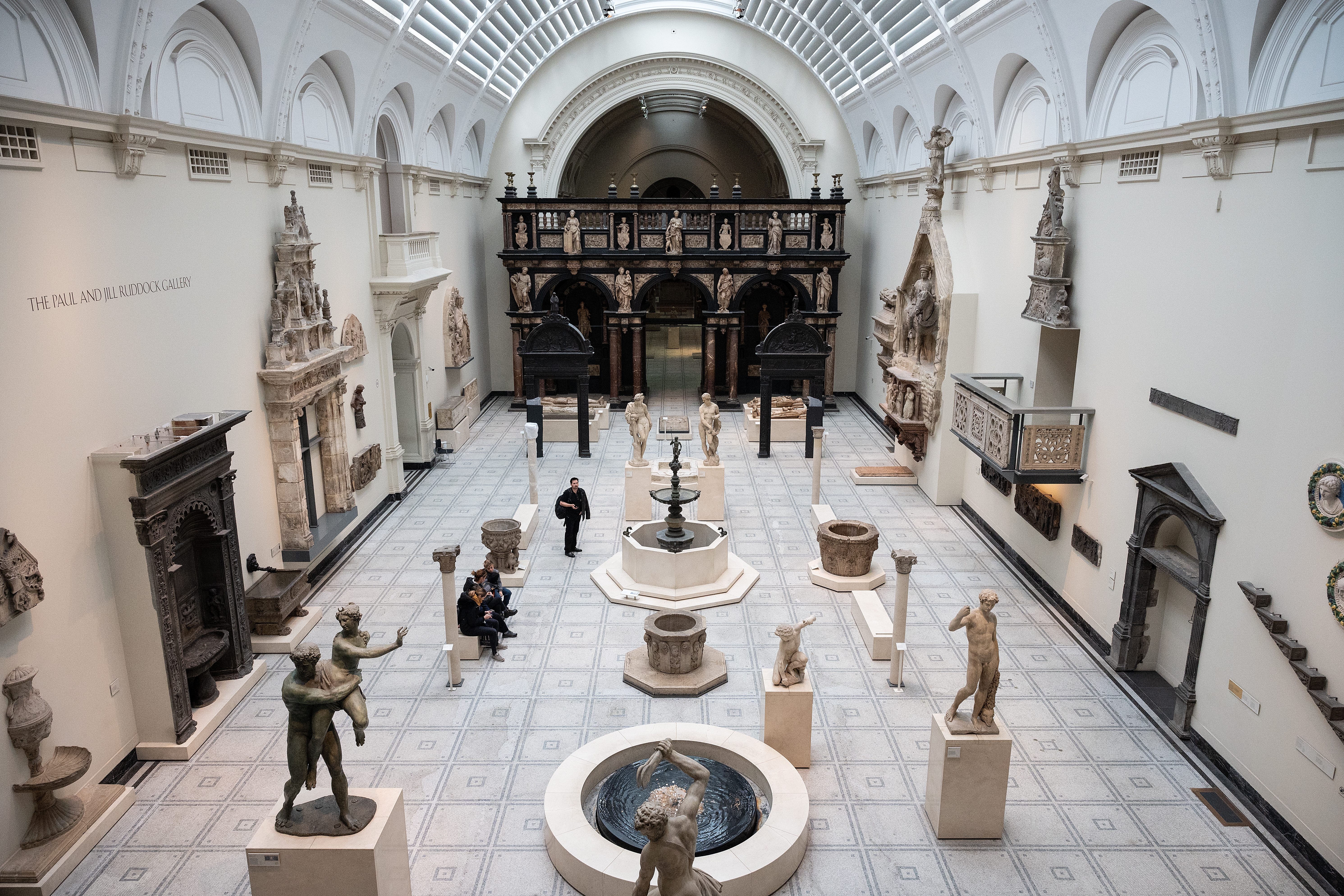These are challenging times for all cultural institutions, not least for the Victoria & Albert Museum and for its director Tristram Hunt. The museum was riding high at the start of 2020 with strikingly successful exhibitions, record attendances and the ongoing realisation of the ambitious plans put in place by Martin Roth, Hunt’s predecessor – with branch museums in Shenzhen, in Dundee, and in East London, where a new museum will open together with a state-of-the-art Collections and Research Centre. But now, with a ten million pound deficit, no one can doubt that in response to the Covid-19 pandemic, staffing cuts will have to be made. The axe has already fallen on jobs in Retail, Conservation, and Collections Management. But, taking necessary cuts as a justification, Hunt has plans to reconfigure the V&A’s curatorial departments in a schema that appears ideological rather than practical – and without any staff consultation.
Background is important here. Since the 1890s the Victoria and Albert Museum has been organised into departments arranged under materials such as ceramics or metal, or genres like sculpture, furniture or textile. In 2001 these departments were partly amalgamated – Furniture, Textiles & Fashion; Sculpture, Metalwork, Ceramics & Glass; and Word & Image (taking in painting, work on paper, the National Art Library and the Archive of Art and Design). The Asian Department, created in 2001, is a successful anomaly, bringing together the vast holdings of Indian and South East Asian and East Asian material and, in 2002, incorporating the Middle East whose objects had previously been divided among the material-based departments. Theatre and Performance is also cross-disciplinary, the responsibility of the V&A since 1974, coming into the museum in 2007, when the Theatre Museum closed. In 2015 Martin Roth created the Design, Architecture and Digital Department which largely focuses on global contemporary collecting in collaboration with other departments. And, ironically, in 2020 Tristram Hunt himself set up a separate Photography Department, photography having being previous been part of Word & Image.
So far, so factual. Nicholas Coleridge’s frothy The Glossy Years might seem an unlikely point of reference in this context. But Coleridge is a V&A trustee (appointed 2012) and is now chair of the trustees (since 2015 and ongoing). He has this to say about the Museum in his care: ‘I found the V&A intriguing. I recognised many parallels with Condé Nast: the Keepers and senior curators felt like the Editors-in-Chief, presiding over their large departments, knowledgeable, siloed, chiefly preoccupied with their own fiefdoms’. ‘Siloed’ – that management consultancy term of abuse, utterly remote from the collective expertise of the V&A curators. Far from being ‘siloed’ in their ‘fiefdoms’, keepers and curators constantly come together to create permanent displays like the ground-breaking British Galleries, the matchless Medieval and Renaissance Galleries and, most recently, Europe 1600-1815. Majestic style-based series, initiated with Art Nouveau 1890-1914 (2000), cross-cultural interrogations like Encounters: The Meeting of Asia and Europe 1500-1800 (2004) and exhibitions that focus on one multi-talented individual like William Kent: Designing Georgian Britain (2014) are also highly collaborative. Individual departments produce splendid exhibitions that focus on their specialisms – from Plywood (2017) to Kimono: Kyoto to Catwalk (2020), cut short by the pandemic. And the material and genre-based displays like the Silver, Ceramics and Furniture Galleries tell stories with imaginative brilliance – of making techniques, consumption and trade through time. Synchronic and diachronic interpretations go hand in hand.
Yet Tristram Hunt now proposes to close the materials- and genre-based departments, redeploying their curators within three mega-departments devoted to Europe and the Americas, divided chronologically into ‘Medieval to Revolution’; the so-called ‘Long Nineteenth Century’; and ‘Modern and Contemporary’. It is a dramatic shift of emphasis that will inevitably undermine a species of knowledge that is second nature to a specialist curator of metalwork or prints or furniture or digital design. At the V&A, a science or humanities degree notwithstanding, the apprenticeship of a neophyte curator has always involved handling objects within a broad specialism and trying to articulate these objects for catalogue entries and registration. Humble, boring jobs lead to gradual development of expertise. Discussions with colleagues are backed up by departmental libraries and archives acquired over decades. Specialists from all over the world visit to consult, bringing news of the latest developments and discoveries to what they regard as the international ‘mother ship’ of museums of design and the decorative arts. Claire Wilcox’s recent bestselling memoir Patch Work: A Life Amongst Clothes (2021) provides a moving picture of the commitment of a V&A curator – and she has been responsible for some of the V&A’s most successful exhibitions – Vivienne Westwood(2004), The Golden Age of Couture(2007), and Alexander McQueen(2015).
Press reaction to Hunt’s restructuring plans has been relatively subdued in this anything-goes time of Covid-19 (think back to 1989 and the vociferous attacks on Elizabeth Esteve-Coll’s attempts to make similar, if less radical changes). One configuration has attracted criticism. Although the Asian Department appears structurally largely untouched, it will now have new curators for sub-Saharan Africa and its diasporas and be renamed Asian and African Cultures. In fact in 2000 the V&A abandoned its 1989 policy of not acquiring work from sub-Saharan Africa. Slotting Africa into the existing Asian Department invokes disturbing thoughts of the West and ‘the Rest’, a clumsy move given that the African diaspora has a global reach that takes in both Europe and the Americas.
But far more serious is the undermining of over a hundred years of knowledge transfer by abolishing the materials-based departments. The V&A curators are not quaint siloed eccentrics. In fact they are intellectually ahead of the curve. Just at the moment when there is widespread popular and academic recognition of the ontological dignity of material things and their creation, it is baffling that the world’s greatest museum of art and design should have its collections sliced along outdated 1066 and All That chronological lines. Cuts must be made. But for a popular and much-liked director to present a dedicated but demoralised staff with restructuring plans which they universally oppose, and which will take years to implement, is bewildering. And I have not gone into the planned dialling down of the V&A’s National Art Library. That would require another article.
Dr Tanya Harrod is the author of The Last Sane Man: Michael Cardew, Modern Pots, Colonialism and the Counterculture and The real thing: essays on making in the modern world






Comments